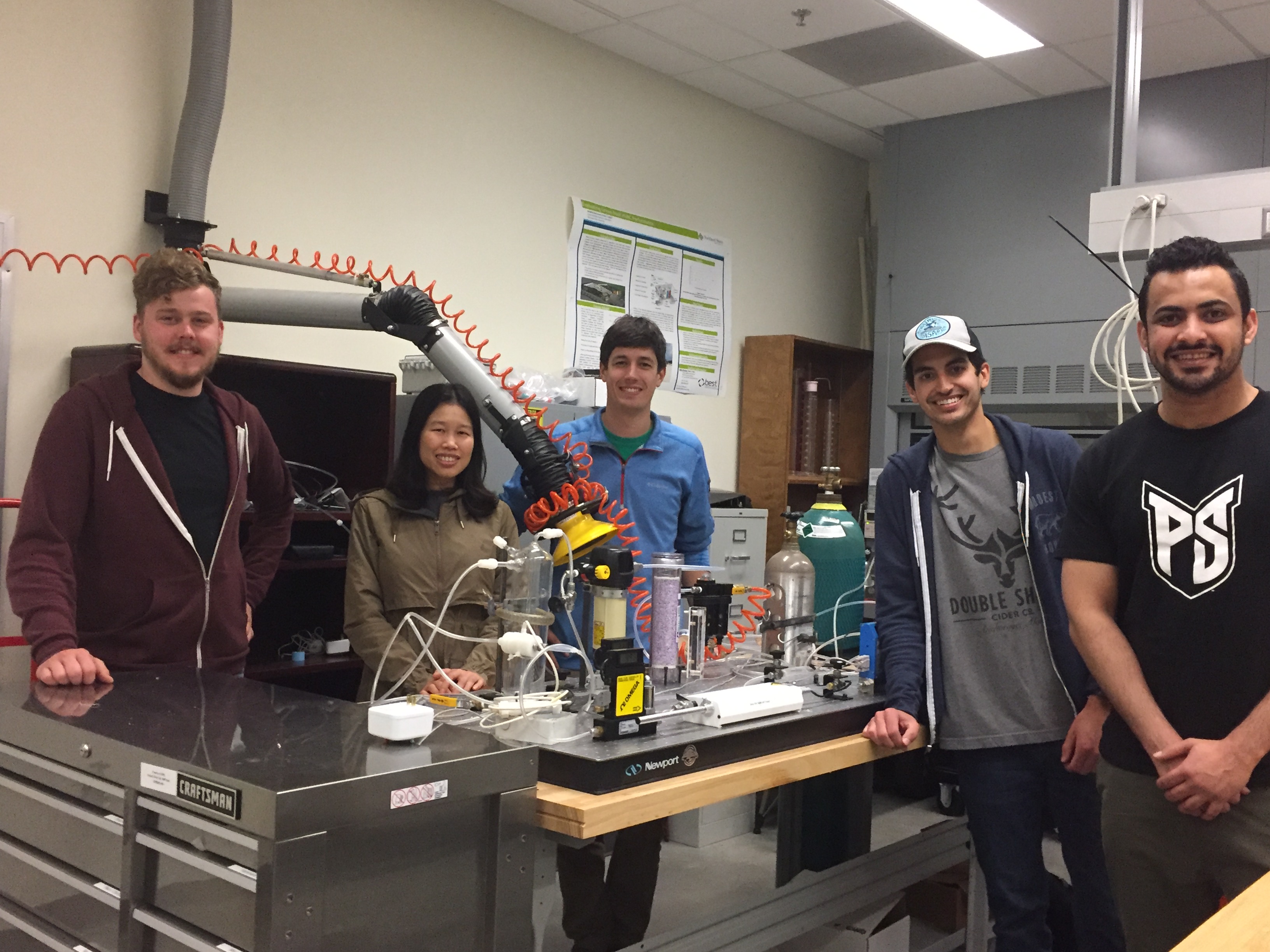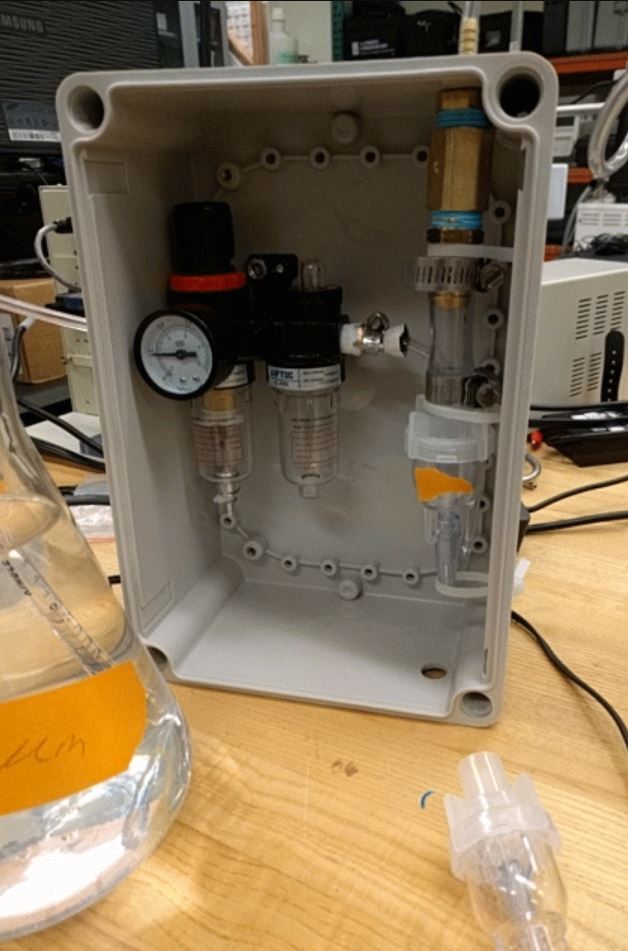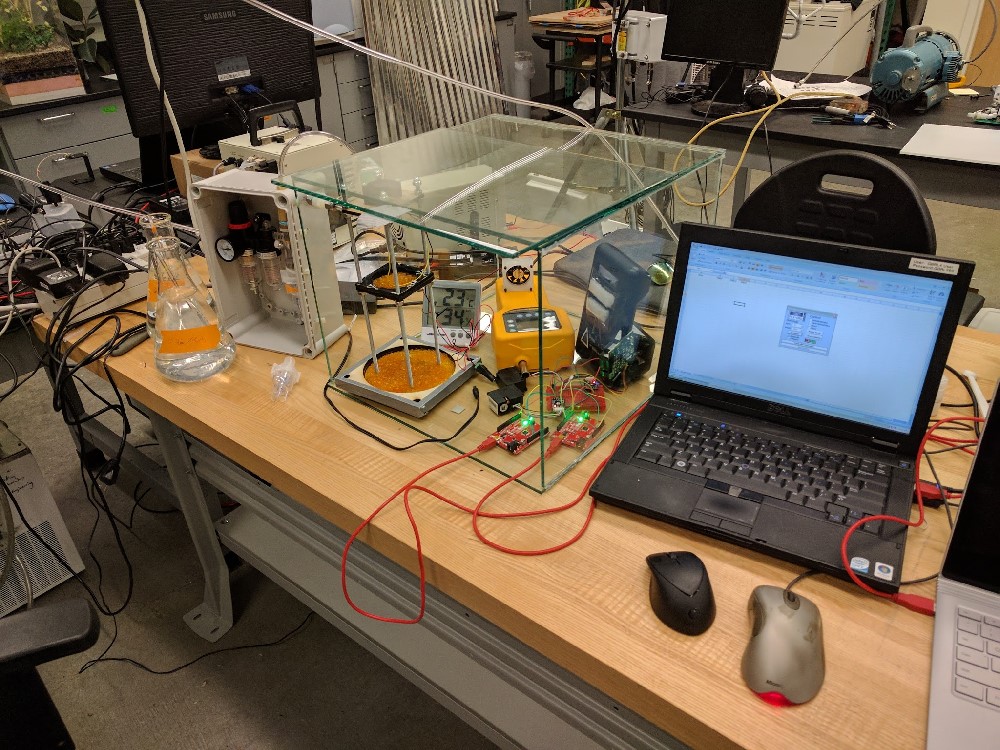Project Objective
Design and build a robust sensor platform to provide accurate ambient and above ambient indoor air quality data to an HVAC controls unit no later than June 9, 2017 with a unit cost less than $2000 and with an engineering budget of $2500 provided by Ventacity Systems.
Team

The project team is
Customer/Market Requirements
The project sponsor requires a device that:
- measures dry bulb temperature and relative humidity, and at least four pollutants out of CO, CO2, O3, PM2.5, VOCs and NOx
- contains sensors that can be calibrated in a timely manner by Ventacity or the team, or are pre-calibrated
- has an aesthetically neutral and weatherproof housing that does not hinder the operation of the sensors or wireless communication
Design Challenges
The sensor testing team has many assets available to it in the Green Building Research Lab (GBRL), but one aspect of testing that has proven difficult is sensing for particulate matter of 2.5 microns and up (PM2.5). The GBRL currently has no ability to measure PM in a controlled volume or flow.
Another challenge is creating a housing unit that is both weatherproof and breathable. A flow of air is required to ensure the sensors are accurate, which conflicts with a fully waterproof case.
Outcomes
Using equipment from the GBRL, the team has been able to calibrate and test the CO2 and ozone sensors in a laboratory environment. Zero air (unpolluted air) comes out of a tank and is fed through a mass flow device to control the amount. The other test gas is brought from another tank and goes through a second mass flow device. The two flows are joined and mixed into a test chamber, which contains the sensors and has an exhaust as well. After a certain number of air changes, the concentration of pollutant levels off and the sensor readings are compared to the known value in parts per million (ppm) from the mass flow devices.
To effectively calibrate and test the PM2.5 sensors, the team is currently building an aerosolyzer from scratch. Polystyrene latex beads sized 0.5 and 3.0 microns will be dispersed with a medical nebulizer. Clean air will be provided by compressed air, which is filtered and humidified in order to attach to the beads and be dispersed in the air. The water will evaporate in the test chamber, and a known concentration of PM will remain. The sensor can then be calibrated and tested as usual.


